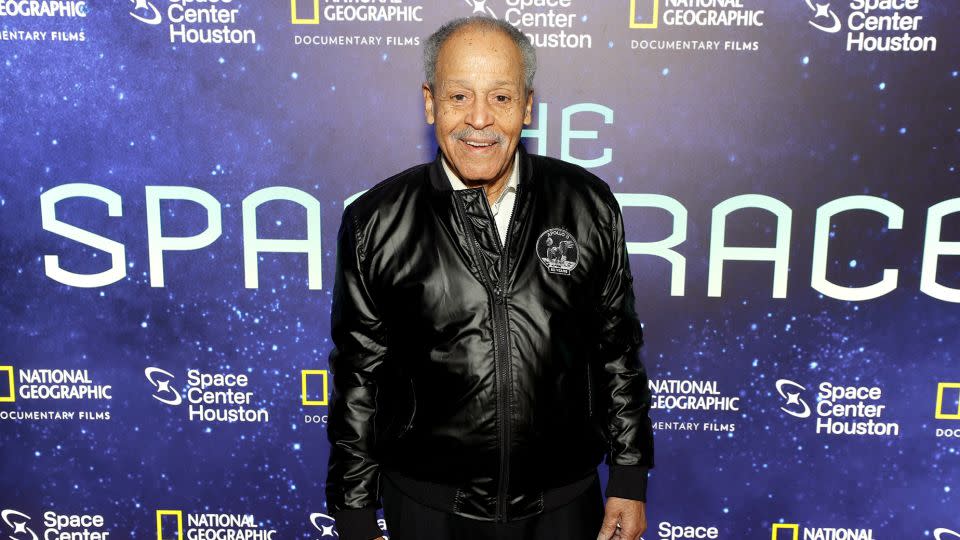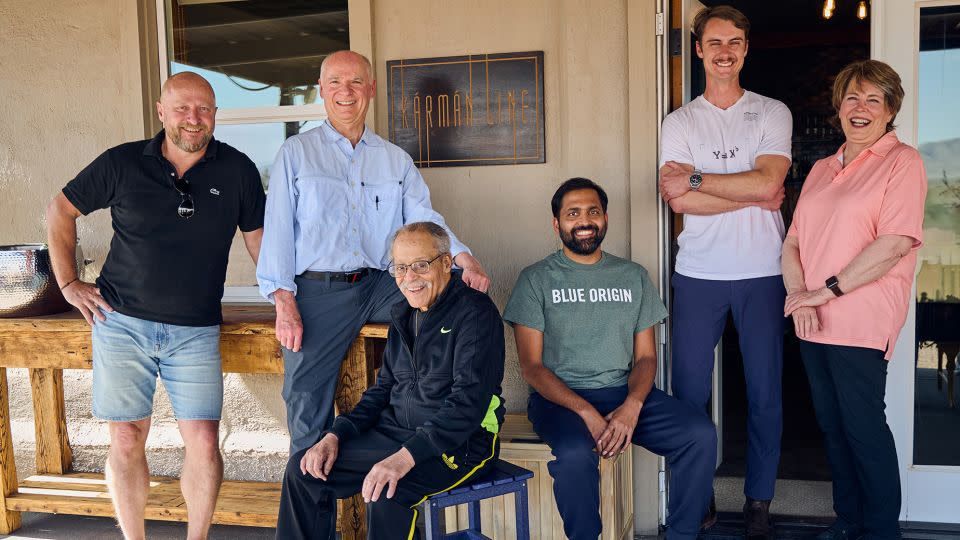Sign up for CNN’s Wonder Theory science newsletter. Explore the universe with news about fascinating discoveries, scientific developments and more.
Blue Origin’s tourist rocket is set to launch passengers to the edge of space for the first time in almost two years, ending a hiatus caused by a failed unmanned test flight.
The New Shepard rocket and capsule will lift off during a window that opens at 8:30 a.m. CT (9:30 a.m. ET) from Blue Origin’s facilities on a private ranch in West Texas. A livestream of the mission, dubbed NS-25, will begin at approximately 7:50 a.m. CT (8:50 a.m. ET) on the Jeff Bezos-founded company’s website.
NS-25, Blue Origin’s seventh crewed flight to date, will carry six clients aboard the capsule: venture capitalist Mason Angel; Sylvain Chiron, founder of French craft brewery Brasserie Mont-Blanc; software engineer and entrepreneur Kenneth L. Hess; retired accountant Carol Schaller; pilot Gopi Thotakura; and Ed Dwight, a retired U.S. Air Force captain who was selected by President John F. Kennedy in 1961 as the nation’s first black astronaut candidate.
Despite completing training at the Aerospace Research Pilot School and receiving an Air Force recommendation, Dwight was ultimately not inducted into the NASA Astronaut Corps. He subsequently became an entrepreneur and sculptor; a new National Geographic documentary about black astronauts, “The Space Race,” highlights Dwight’s groundbreaking story.
“I didn’t set out to become an astronaut. That was the last thing on my bucket list,” Dwight said in the documentary. “But as soon as I got the challenge, everything changed.”

Dwight will complete that challenge and reach the edge of space at the age of 90, making him the oldest person to venture to such heights, a Blue Origin spokesperson said.
During the mission, the crew flies at more than three times the speed of sound, or more than 3,000 kilometers per hour. The rocket will launch the capsule beyond the Kármán Line, an area 100 kilometers above the Earth’s surface. generally recognized as the height at which space begins, but there is a lot of gray area.
And at the peak of the flight, passengers will experience a few minutes of weightlessness and stunning views of the Earth through the cabin windows.
The launch follows the success of an unmanned science mission in December – the New Shepard program’s first flight since the accident over a year earlier.
The failure of New Shepard in 2022
A New Shepard rocket and spacecraft were scheduled to launch an array of scientific instruments on September 12, 2022. But after one minute of flight, the rocket passed Max Q – an aerospace term referring to a moment of maximum load on a vehicle. It occurs when the rocket is at a relatively low altitude – where the atmosphere is still quite thick – but the spacecraft is moving at high speed, creating a moment of intense pressure on the vehicle.
About that time, the rocket appeared to emit a huge burst of flame. The New Shepard capsule, which rides on top of the rocket, then initiated the launch abort system, starting a small engine to safely launch itself away from the failed rocket. That system worked as intended and parachuted the capsule to a safe landing.
Blue Origin later revealed that the cause of the failure was a problem with the engine nozzle, a large cone that directs flaming exhaust gases toward the bottom of the rocket. On-board computers accurately detected the fault and shut down the engine, the company said.


No injuries were reported on the ground and Blue Origin said the science payload and capsule could be flown again.
But the rocket, left without a functioning engine, crashed back into the ground and was destroyed. Typically, after New Shepard launches, the rocket booster guides itself back to a safe, upright landing so it can be flown again.
During a December interview with podcaster Lex Fridman, Bezos said the escape system that lifted the capsule to safety is the most difficult piece of engineering on the entire rocket — but “it’s the reason I’m comfortable putting someone on New Shepard.” ”
“The (rocket) booster is as safe and reliable as we can make it,” Bezos added. “The power density is so enormous that it is impossible to ever be sure that nothing will go wrong. … So the only way to improve safety is to have an escape system.
“A tourist vehicle, in my opinion, should be designed … to be as safe as possible,” he said. “You can’t make it completely safe. It’s impossible.”
Missile repaired and returned to service
The Federal Aviation Administration, which licenses commercial rocket launches and is charged with ensuring public safety, oversaw an investigation into the failure. The probe revealed that the engine’s nozzle failed as it experienced higher temperatures than what the company expected.
To fix the problem, Blue Origin said it made “design changes to the combustion chamber” — the area of the engine where fuel explosively mixes with oxidizer — and adjusted “operating parameters,” or the data the company uses to determine safe to model flights.
“Additional design changes to the nozzle have improved structural performance under thermal and dynamic loads,” the company said in a March 2023 statement.
The FAA formally concluded its investigation into the accident on September 27, 2023, outlining 21 “corrective actions” that Blue Origin must implement before returning to flight. The agency did not release details on what those actions were, noting that the report “includes proprietary data and U.S. export controls information and is not available for public release.”
The changes and New Shephard’s successful December flight prompted the company to restart its space travel for thrill-seekers.
Before the September 2022 failure, the New Shepard rockets had flown 22 consecutive successful missions – six of which carried passengers. Bezos flew aboard the rocket in 2021. Other notable space tourists previously transported by the vehicle include “Star Trek” actor William Shatner and “Good Morning America” host Michael Strahan.
CNN’s Madeline Holcombe contributed to this report.
For more CNN news and newsletters, create an account at CNN.com